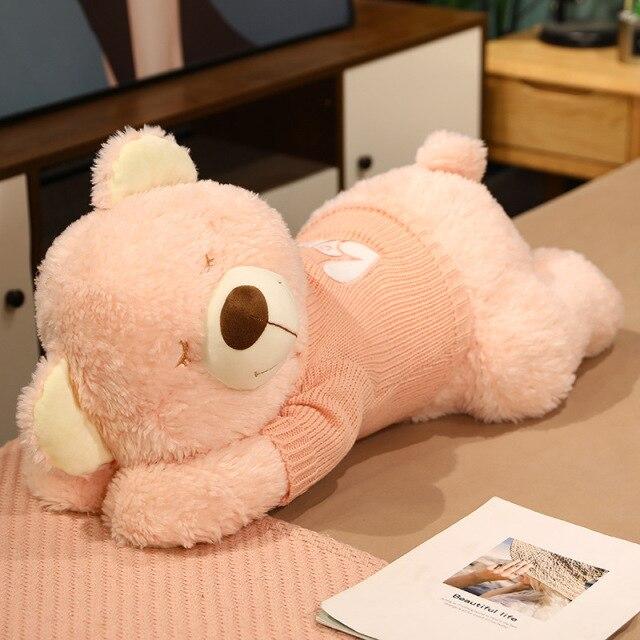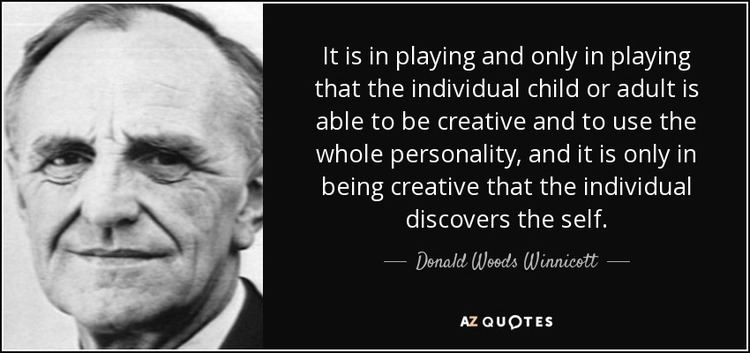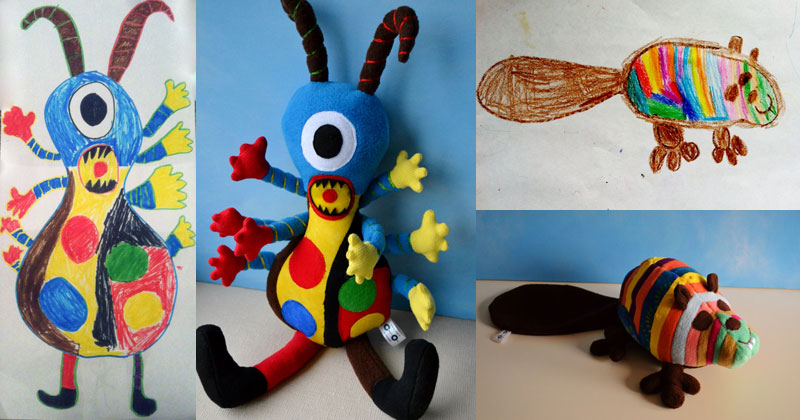Table of Contents
Plush Sleepy Bears have long held a special place in the hearts of children around the world. These cuddly companions transcend their role as toys; they become trusted confidants and sources of solace. Have you ever wondered why children are instinctively drawn to these furry friends? The answer lies in the intricate science of comfort and emotional development.
Indeed, the allure of Plush Sleepy Bears goes beyond their cuddly appearance. Let’s delve deeper into the captivating science of why these stuffed animals hold such a cherished place in children’s lives:
Sense of Security: Plush Sleepy Bears offer a comforting sense of security. For young children, the world can be overwhelming and full of new experiences. The presence of a familiar and soft companion provides a soothing anchor, helping them navigate through uncertainty and change.
Attachment and Bonding: The attachment formed between a child and their plush bear is akin to the secure attachment children develop with their caregivers. This bond is vital for emotional development. Children learn about trust, empathy and forming meaningful relationships through their interactions with their stuffed animals.
Transitional Object: Psychologists recognize the significance of transitional objects, like Plush Sleepy Bears, in a child’s development. These beloved companions help children bridge the gap between dependence on their caregivers and gaining independence. They provide comfort during times of separation or transition, such as starting preschool or sleeping alone.
Emotional Expression: Children often use their Plush Sleepy Bears as emotional outlets. They may hug, talk to or even vent their frustrations to these trusted friends. This form of emotional expression is essential for children to understand and process their feelings.
Imagination and Creativity: Plush bears become central figures in a child’s imaginative play. They take on roles in elaborate make-believe scenarios, encouraging creativity and storytelling. This imaginative play fosters cognitive development and helps children explore various aspects of their emotions and experiences.
Comforting Rituals: Many children develop comforting rituals involving their Plush Sleepy Bears. These rituals, such as bedtime cuddles or bringing the bear along for adventures, offer a sense of continuity and predictability. They become part of a child’s daily routine, promoting emotional stability.
Empathy and Nurturing: Taking care of their plush companions teaches children important life skills, including empathy and nurturing. They learn to be responsible and considerate as they feed, dress and care for their stuffed animals. These skills translate into their interactions with peers and family members.
Social and Communication Skills: Plush Sleepy Bears serve as conversation starters for children. They may talk to their bears, share stories and engage in dialogues. This practice enhances their communication skills, vocabulary and ability to express themselves effectively.
Comfort Beyond Childhood: The impact of Plush Sleepy Bears often extends beyond childhood. Many adults retain their childhood plush friends as cherished keepsakes, providing a sense of nostalgia and comfort during challenging times.
In conclusion, the fascination with Plush Sleepy Bears in childhood is deeply rooted in the science of emotional development and comfort. These cuddly companions offer a sense of security, promote attachment and serve as outlets for emotional expression. They also play pivotal roles in nurturing creativity, empathy and social skills. Understanding the intricate science behind this enduring bond helps us appreciate the profound impact that these stuffed animals have on the emotional growth and well-being of children around the world.
To delve further into this matter, we encourage you to check out the additional resources provided here: Young Children’s Preference for Unique Owned Objects – PMC
Touch and Tactile Comfort
At the core of a child’s attachment to plush Sleepy Bears is the sense of touch. Human beings, especially infants and young children, have an innate need for tactile comfort. The soft, fuzzy texture of a plush bear provides a soothing sensation when touched, offering a sense of security and warmth. It’s akin to a gentle hug that reassures the child, making them feel safe and loved.
This tactile comfort activates the release of oxytocin, often referred to as the “love hormone.” Oxytocin promotes feelings of bonding and reduces stress and anxiety. When a child cuddles their plush Sleepy Bear, this hormone is released, creating a physiological response that enhances their emotional well-being.
You can also read more about this here: The Rise of Cuddly Comfort Objects for Anxious Adults | Time

Transitional Object Theory
Psychologists have long recognized the significance of transitional objects in a child’s development. Plush Sleepy Bears often serve as these transitional objects, playing a vital role in helping children transition from the early stages of life to greater independence.
As children grow, they begin to explore the world around them and gradually separate from their primary caregivers. A plush bear acts as a constant and reliable presence during this transition. It becomes a source of comfort when the child is away from their parents, offering a familiar connection that eases separation anxiety and provides emotional support.
Psychologists have long recognized the significance of transitional objects in a child’s development. Plush Sleepy Bears often serve as these transitional objects, playing a vital role in helping children transition from the early stages of life to greater independence. As children grow, they begin to explore the world around them and gradually separate from their primary caregivers. A plush bear acts as a constant and reliable presence during this transition. It becomes a source of comfort when the child is away from their parents, offering a familiar connection that eases separation anxiety and provides emotional support.
Beyond just being a cuddly companion, Plush Sleepy Bears serve as a bridge between the child’s inner world and the external environment. They become a canvas for the child’s imagination, a confidant for their secrets and a friend who listens without judgment. In this way, the bear becomes an essential tool for emotional expression and self-soothing.
One remarkable aspect of these transitional objects is their adaptability. As a child matures, the role of the plush bear evolves as well. Initially, it may simply be a soft object to cling to for comfort. However, as the child gains language skills and emotional intelligence, the bear can become a character in their imaginative play, helping them process complex emotions and navigate the challenges of growing up.
Moreover, Plush Sleepy Bears can impart valuable life lessons to children. They teach responsibility as children learn to care for their bear, providing a sense of ownership and commitment. This nurturing behavior can extend to how they interact with others and develop empathy.
Transitioning from childhood to adolescence is a pivotal time and the role of the Plush Sleepy Bear can still be crucial. Even as children mature and become more independent, they may experience periods of uncertainty, stress or self-doubt. The familiar presence of their plush companion offers a sense of continuity and security during these challenging times.
Furthermore, the emotional attachment to a plush bear can become a cherished memory as children grow into adulthood. It serves as a reminder of the innocence and simplicity of childhood, a touchstone to revisit when life becomes complex and demanding. These bears often become keepsakes, passed down through generations, carrying with them the stories and emotions of family history.
In sum, Plush Sleepy Bears are not just toys; they are companions that facilitate a child’s emotional development, provide solace in times of need and offer a lasting connection to the joys and challenges of growing up. Their significance in a child’s life extends far beyond the plush surface, shaping memories and providing comfort throughout the journey from infancy to adulthood.
Explore this link for a more extensive examination of the topic: ON THE VALUE OF TEDDY BEARS AND BARBIE DOLLS: THE …

Emotional Expression and Regulation
Children often lack the vocabulary to express their complex emotions fully. Plush Sleepy Bears serve as non-judgmental listeners and emotional mirrors. When a child hugs their bear tightly during moments of sadness or anger, it symbolizes an outlet for their feelings. The bear absorbs their emotional intensity and offers a safe space for self-expression.
This emotional regulation is an essential component of a child’s development. Through their interactions with their plush companion, children learn to identify and manage their emotions, a skill that carries over into their interactions with others.
Children’s emotional development is a complex journey and plush Sleepy Bears play a significant role in helping them navigate this intricate process. Beyond being cuddly companions, these bears act as silent allies in a child’s emotional world. Let’s delve deeper into how they facilitate emotional growth and understanding:
1. Non-Judgmental Confidants: Plush Sleepy Bears offer a unique form of companionship. They don’t judge or critique a child’s feelings, creating a safe space for open expression. When a child clutches their bear during emotional moments, they find solace in knowing that their bear won’t question or dismiss their emotions.
2. Emotional Mirrors: In many ways, Sleepy Bears become emotional mirrors for children. When a child hugs their bear tightly while feeling sad, anxious or angry, they witness their emotions externalized through their bear. This visual representation can help them recognize and acknowledge their feelings, which is a vital step in emotional intelligence.
3. Outlet for Expression: Children often lack the words to articulate their complex emotions effectively. The act of hugging, talking to or even role-playing with their plush companion becomes an outlet for self-expression. They can convey their feelings physically and verbally through their interactions with the bear.
4. Emotional Regulation: Learning to manage emotions is a critical aspect of child development. Plush Sleepy Bears become valuable tools in this process. When a child holds their bear close, they can experience the calming effect of physical touch, which helps regulate their emotional intensity. This practice lays the foundation for self-soothing and emotional regulation skills.
5. Empathy and Compassion: Through their interactions with their bears, children learn not only to recognize and manage their emotions but also to extend empathy and compassion to others. When they see their bear as a source of comfort, they begin to understand the importance of providing comfort and support to those around them.
6. Building Resilience: Facing and coping with various emotions helps children build emotional resilience. Plush Sleepy Bears serve as companions through both the ups and downs of a child’s emotional journey. This consistency and reliability contribute to a child’s ability to bounce back from challenges and setbacks.
7. Communication Skills: As children develop a deeper connection with their bears, they often engage in imaginative play and storytelling. These activities enhance their communication skills, allowing them to express their thoughts and emotions more effectively with both their bear and the people in their lives.
8. Lifelong Emotional Tools: The emotional skills cultivated through interactions with Sleepy Bears are not limited to childhood. They lay the foundation for healthy emotional expression and regulation throughout a person’s life. The ability to identify, understand and manage emotions is a lifelong asset that impacts relationships, decision-making and overall well-being.
In conclusion, plush Sleepy Bears are more than just cuddly toys; they are essential companions on a child’s emotional journey. By providing a non-judgmental, safe outlet for self-expression and offering comfort during times of emotional turbulence, these bears play a pivotal role in fostering emotional intelligence and resilience in children. The lessons learned through their interactions with their bear become enduring tools that shape their emotional well-being and relationships throughout life.
To expand your knowledge on this subject, make sure to read on at this location: Play therapy in children with autism: Its role, implications, and …

Symbolic Representation
Plush Sleepy Bears can symbolize comfort and security, even when the child is not physically holding them. The mere presence of the bear can serve as a reminder of home, family and love. This symbolic representation provides a sense of consistency and stability in a child’s life, promoting emotional resilience.
The symbolic significance of Plush Sleepy Bears transcends their physicality, carrying a profound impact on a child’s emotional well-being and development. Here’s a more comprehensive exploration of how these cuddly companions become potent symbols of comfort, security and emotional resilience:
1. A Symbol of Home and Family:
- Plush Sleepy Bears often become cherished symbols of home and family. They represent the warmth and love that a child associates with their household. Whether a child is at home or away, the bear serves as a tangible link to the familiar and comforting environment of their family.
2. Unwavering Presence:
- Plush bears are reliable and unwavering in their presence, even when they’re not physically held. This constancy offers reassurance to a child. Knowing that their bear is nearby provides a sense of security and stability, reducing anxiety in unfamiliar or challenging situations.
3. Emotional Anchoring:
- These bears serve as emotional anchors. They ground a child in a world that can often be unpredictable and overwhelming. The bear’s presence acts as a reassuring constant amid the fluctuations of life, promoting emotional grounding and resilience.
4. Transition and Change:
- During times of transition or change, Plush Sleepy Bears can be particularly vital. Whether a child is starting school, moving to a new home or experiencing other significant life events, the bear offers a sense of continuity and comfort, making the transition smoother.
5. Coping Mechanism:
- Plush bears can become a coping mechanism for children during times of stress or sadness. Hugging or talking to their bear allows children to express their emotions in a safe and non-judgmental way. This emotional release can be cathartic and promote emotional well-being.
6. Emotional Resilience:
- The presence of a Plush Sleepy Bear cultivates emotional resilience in children. It teaches them that they can seek solace and support from within themselves, using their imagination and the symbolic comfort the bear represents. This inner strength can serve them well throughout their lives.
7. Transition to Independence:
- As children grow and gain independence, the bear can evolve from being a source of immediate comfort to a symbol of emotional strength and security. It becomes a reminder that they carry a piece of home and family with them, even when they venture into the wider world.
8. Sentimental Value:
- Many adults retain their childhood plush bears as sentimental treasures. These bears hold not only the memories of childhood but also the enduring sense of comfort and security that they provided. They serve as reminders of the emotional resilience cultivated during youth.
In summary, Plush Sleepy Bears are more than just stuffed animals; they are symbols of love, comfort and emotional resilience. Their ability to provide reassurance and stability in a child’s life extends far beyond their physical presence. These bears become powerful emotional anchors, grounding children in a world of constant change and uncertainty. They teach children about the enduring power of love, support and inner strength—a lesson that stays with them as they grow into resilient and emotionally secure individuals.
Should you desire more in-depth information, it’s available for your perusal on this page: Imaginary Companions in Children with Autism Spectrum Disorder …

In conclusion, the allure of plush Sleepy Bears for children is not merely a matter of aesthetics; it’s deeply rooted in the science of comfort and emotional development. These cuddly companions offer a tactile, emotional and symbolic connection that promotes a child’s well-being and growth. They provide comfort during moments of distress, support during transitions and a canvas for emotional expression. So, the next time you see a child cuddling their plush bear, know that it’s not just a toy; it’s a profound source of comfort and a vital part of their emotional journey.
Indeed, the significance of plush Sleepy Bears in the lives of children goes far beyond their charming appearance. It is a testament to the intricate relationship between these cuddly companions and a child’s emotional development and well-being. Let’s delve deeper into the profound impact these soft bears have:
1. Emotional Anchors: Plush Sleepy Bears serve as emotional anchors in a child’s world. These comforting companions offer a constant source of reassurance and security. In times of uncertainty, stress or change, children often turn to their plush bears for solace. These moments of comfort play a crucial role in helping children navigate the complexities of their emotions.
2. Transitional Support: Sleepy Bears are reliable transitional objects. They assist children in transitioning from one stage of development to another, whether it’s from infancy to toddlerhood, the first day of school or dealing with separation anxiety. These bears provide a familiar presence that eases the challenges of change and encourages emotional resilience.
3. Self-Expression: Plush bears become trusted confidants with whom children can share their deepest feelings and thoughts. Children often project their emotions onto their stuffed friends, using them as a canvas for self-expression and exploration of their inner world. This symbolic interaction fosters emotional intelligence and self-awareness.
4. Stress Reduction: The act of cuddling a plush bear has been scientifically shown to reduce stress and anxiety in children. The soft texture and comforting embrace of these companions trigger the release of soothing hormones, promoting a sense of calm and relaxation. This tangible comfort aids in managing the ups and downs of childhood.
5. Empathy and Compassion: Caring for a plush bear teaches children important life skills, such as empathy and compassion. It allows them to understand the concept of nurturing and responsibility. This early exposure to caregiving can lay the foundation for strong interpersonal relationships in the future.
6. Unconditional Love: Plush bears provide children with a sense of unconditional love and acceptance. Regardless of a child’s mood, behavior or circumstances, their bear remains a constant source of affection. This unwavering love reinforces a child’s self-worth and self-esteem.
7. Lifelong Memories: The bond between a child and their Sleepy Bear often creates lifelong memories. The stories, adventures and shared experiences become a cherished part of a child’s personal narrative. These memories continue to hold significance even as the child grows into adulthood.
In essence, plush Sleepy Bears are not just toys; they are emotional anchors, companions and symbols of comfort. Their impact on a child’s emotional development is immeasurable, providing support, reassurance and a sense of belonging. So, the next time you encounter a child and their beloved plush bear, recognize that it represents much more than a cuddly toy—it embodies the profound journey of childhood, marked by love, growth and emotional connection.
For additional details, consider exploring the related content available here Adventuring with Books: A Booklist for Pre-K-Grade 6. NCTE …
More links
Explore this link for a more extensive examination of the topic: 7 Reasons Adults Should Have Stuffed Animals Too | Mental Health
